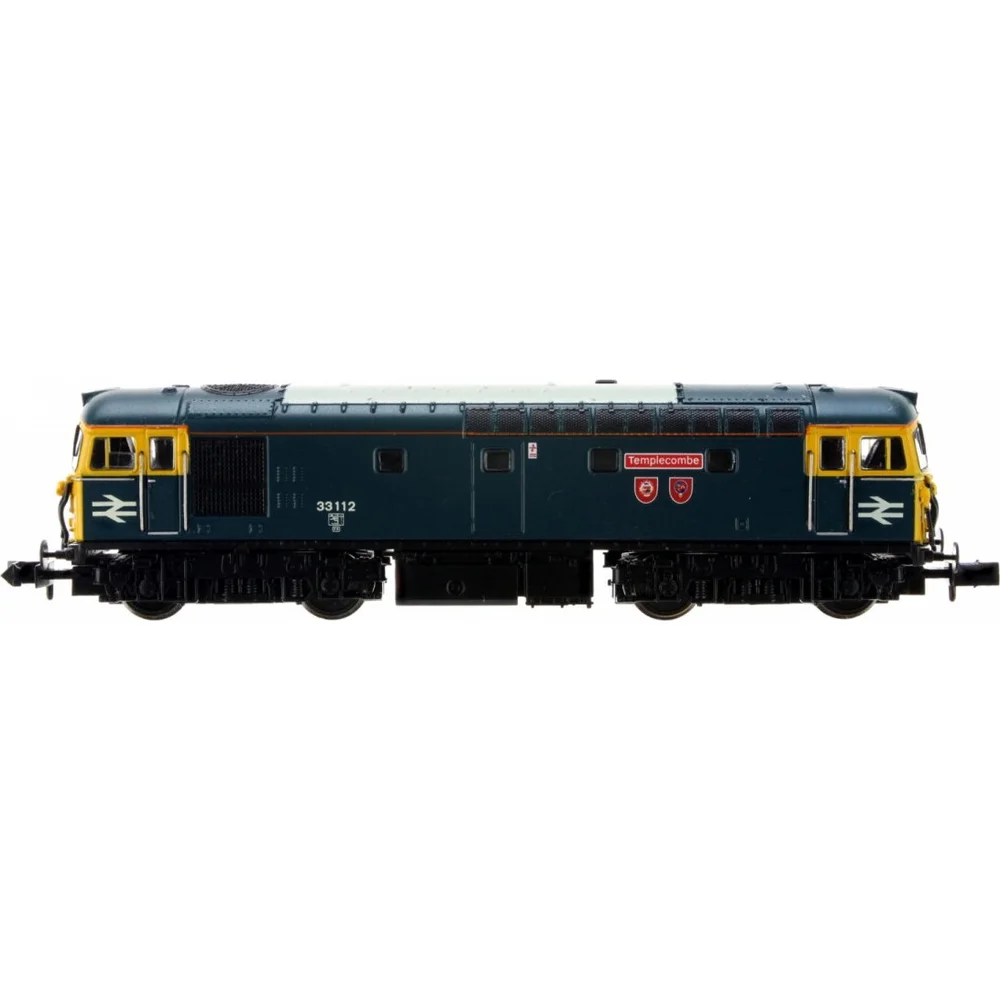Dapol 2D-001-023D
British Rail Class 33 33112 Templecombe British Rail Blue
Class & Prototype
- Class: British Rail Class 33
- Traction: Diesel
- Transmission: Electric
- Built: 1960-1962
- Total Built: 98
- Running Number: 33112
- Name: Templecombe
The British Rail Class 33 "Crompton" represents one of the most successful Southern Region diesel designs. Built by Birmingham Railway Carriage and Wagon Company between 1960-1962, these 1,550 hp Bo-Bo locomotives featured Sulzer 8LDA28-B engines and Crompton Parkinson electrics. The 98-strong fleet comprised three variants: 86 standard Class 33/0 mixed-traffic locomotives, 19 Class 33/1 "Bagpipes" push-pull conversions, and 12 narrow-bodied Class 33/2 "Slim Jims" for the restricted Hastings line. They worked boat trains, branch passenger services, heavy freight, and pioneered push-pull operations with 4TC sets on the Bournemouth-Weymouth corridor from 1967-1988. Service life spanned 1960-2001, with 29 locomotives (30% of the class) preserved. Comprehensive model availability exists in OO gauge (Heljan), N gauge (Dapol), and O gauge (Heljan).
Operator & Livery
- Operator: British Rail
- Livery: Blue
- Era: 7 - British Rail Blue TOPS
British Rail (1965-1997) transformed Britain's railways through revolutionary modernisation, introducing the iconic double arrow logo, Rail Blue livery, and business sectorisation. BR pioneered high-speed rail with the InterCity 125 and Advanced Passenger Train, electrified major routes, and created profitable divisions like InterCity and Network SouthEast. From steam succession through diesel and electric development to privatisation preparation, British Rail's diverse locomotive fleet, multiple livery schemes, and operational scenarios provide unparalleled variety for railway modellers across all scales and periods.
BR Blue, also known as Rail Blue or Monastral Blue, was introduced in 1965 as part of British Rail's comprehensive corporate identity overhaul that accompanied the rebranding from British Railways to British Rail. The colour was officially defined by British Standards BR28/6001 (airless spray finish) and BR28/5321 (brush finish), representing a dark, greyish blue tone specifically chosen to hide dirt and weathering effects well.
The livery was prototyped on the experimental XP64 train in 1964 before becoming the standard scheme from 1 January 1965. Rail Blue was applied to all diesel and electric locomotives with yellow warning panels (initially small, then extending to full yellow ends from 1966). The standardised application included the iconic double arrow logo and Rail Alphabet typeface, creating one of the most successful transport corporate identities of the 20th century.
The livery dominated British Rail operations for over two decades until sectorisation in the 1980s began fragmenting the unified appearance. Despite initial colour fading problems in early applications, these were resolved by the late 1970s when the Large Logo variant was introduced featuring extended yellow areas and full-height double arrow symbols. Rail Blue's enduring appeal among railway enthusiasts reflects its role as the definitive British Rail image during the organisation's most unified period.
